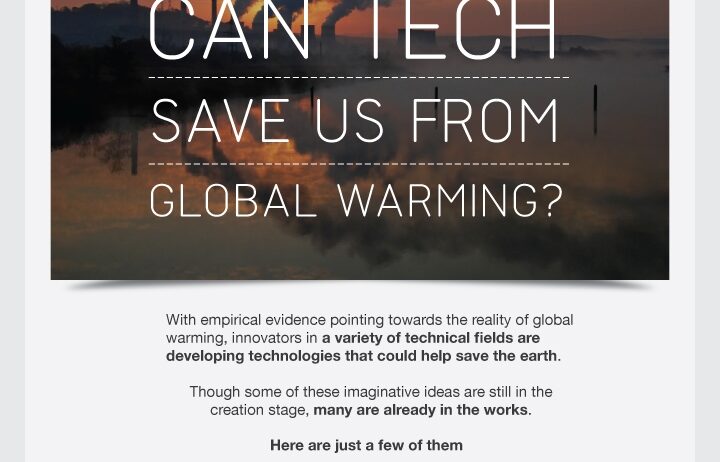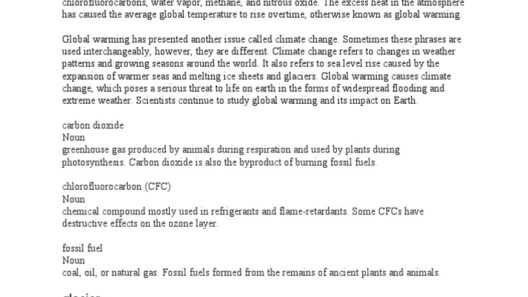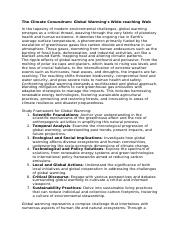The perils of climate change and global warming are no longer a specter in the distance; they are an imminent reality. Rising temperatures, extreme weather events, and the melting of polar ice caps are just a few alarming manifestations of this multifaceted crisis. With this looming threat, can technology serve as our savior, or are we merely placing our hopes in the machinations of silicon and circuits? This inquiry not only poses an intriguing question but sets the stage for a critical examination of our reliance on technological innovations as a potential solution.
At the heart of the conversation surrounding technology and global warming lies the concept of renewable energy. Solar panels, wind turbines, and geothermal systems exemplify the burgeoning arena of sustainable energy sources. The transition from fossil fuels to renewable energy is pivotal in mitigating greenhouse gas emissions. For instance, according to numerous studies, a considerable reduction in carbon footprints can be achieved through the widespread adoption of solar energy technology, which captures and repurposes sunlight to generate electricity. As solar technology matures, its efficacy and cost-effectiveness continue to improve, thus providing a viable alternative to traditional energy sources that have wreaked havoc on our planet.
Moreover, wind energy has emerged as a formidable counterpart in the quest for sustainability. Wind farms, strategically located in areas with high wind velocities, harness the natural power of air currents to generate electricity. The international community has already observed nations like Denmark, which has managed to derive over 40% of its energy from wind sources. Such examples illuminate the path forward, endorsing the hypothesis that transitioning to renewable energy can substantially ameliorate the dire impacts of climate change.
However, one must tread carefully when attributing a panacea-like status to these technologies. While renewable energy presents a glimmer of hope, several challenges remain. The intermittency of solar and wind energy—wherein energy generation fluctuates based on weather conditions—introduces intricacies that current energy grids are not fully equipped to handle. Innovative solutions such as energy storage technologies, including advanced batteries, and smart grids that can optimize energy distribution need further exploration and investment. The dexterous interplay between technological advances and infrastructural evolution is essential for a harmonious transition to a sustainable energy paradigm.
In addition to energy generation, technological advancements in carbon capture and storage (CCS) are garnering attention as a strategic approach to combat rising atmospheric carbon dioxide levels. CCS involves the extraction of CO2 emissions at their sources—such as power plants and industrial facilities—and sequestering them underground to mitigate greenhouse gas concentrations. Companies and researchers worldwide are fervently exploring ways to enhance the efficiency and affordability of CCS technologies. The prospect of reducing existing atmospheric CO2 levels through innovative engineering solutions poses an exciting challenge: can we achieve the necessary scale and cost reductions that will make CCS a feasible pathway toward a cleaner atmosphere?
Transportation, another critical sector contributing to greenhouse gas emissions, is witnessing a fundamental transformation driven by technology. The advent of electric vehicles (EVs) heralds a future where individual mobility need not come at the expense of environmental integrity. By utilizing batteries powered by renewable energy sources, EVs have the potential to drastically reduce pollution levels in urban areas and decrease dependence on fossil fuels. Furthermore, the integration of autonomous driving technology, which emphasizes efficiency and reduced congestion, could further mitigate environmental impacts. However, this transition is fraught with challenges, including the development of extensive charging infrastructure and the environmental implications of battery production and disposal.
The agricultural sector is also experiencing a technological renaissance that promises to bolster sustainability. Precision agriculture, which employs technology such as GPS, drones, and IoT sensors, enables farmers to optimize resource use and enhance crop yield while minimizing waste. With the global population projected to reach nearly 10 billion by 2050, the ability to produce food sustainably is imperative. Yet, the question arises: will technological advancements be sufficient to alleviate food insecurity while preserving biodiversity and ecosystems?
Additionally, advancements in biotechnology, including genetic engineering, present a dual-edged sword. On one hand, genetically modified organisms (GMOs) have the potential to develop crops that are more resilient to climate change, disease, and pests. On the other hand, the ethical implications and potential long-term impacts on biodiversity raise significant concerns. The challenge is to balance technological innovation with ecological stewardship.
While technology undoubtedly holds promise in combating global warming, it is imperative to recognize that it is not a singular solution. Collective action, policy frameworks, and societal shifts are paramount for meaningful progress. Public engagement and awareness are critical to fostering a culture of sustainability, where individuals and communities take action to reduce their carbon footprints and advocate for systemic change.
The pursuit of a sustainable future necessitates a multifaceted approach, blending technology with ethics, policy, and community engagement. The potential of technology to save us from global warming is contingent upon our willingness to embrace innovation while remaining mindful of the inherent challenges and complexities of our environment. As we navigate this intricate landscape, we must ask ourselves: can we harness the power of technology not merely as a remedy, but as a means to redefine our relationship with the planet? The answer may lie not only in the advancement of technology but also in the evolution of our collective consciousness toward sustainability.








Professional excellence delivered, skilled professional execution. Professional standards appreciated. Expert recognition.